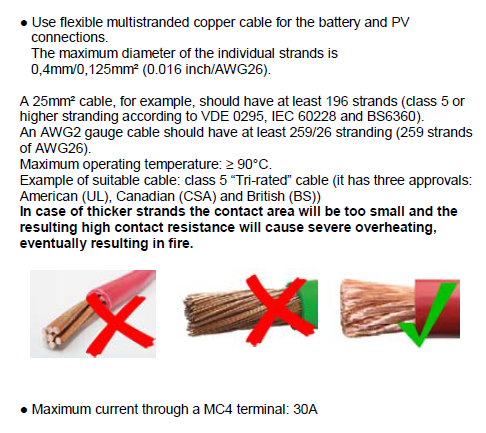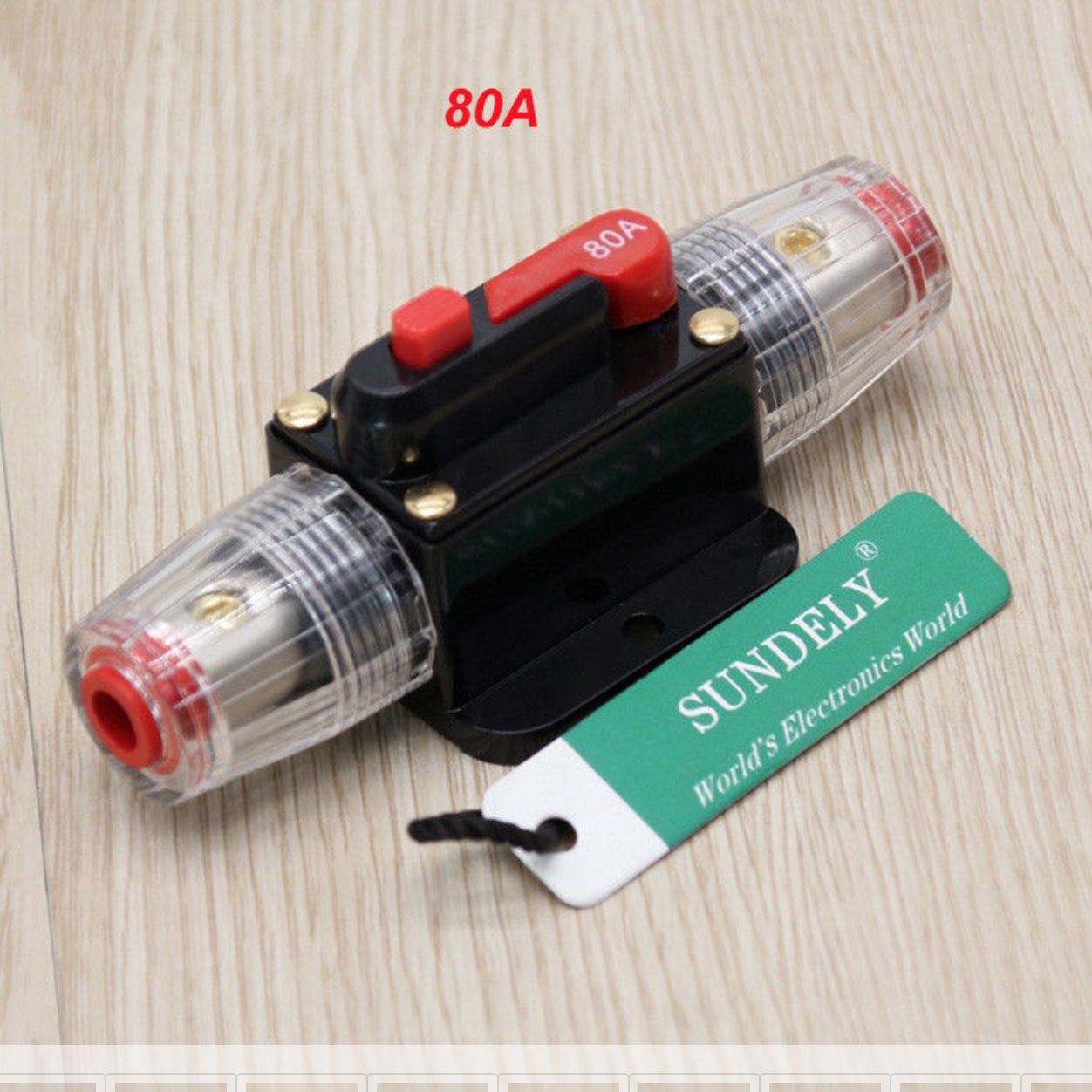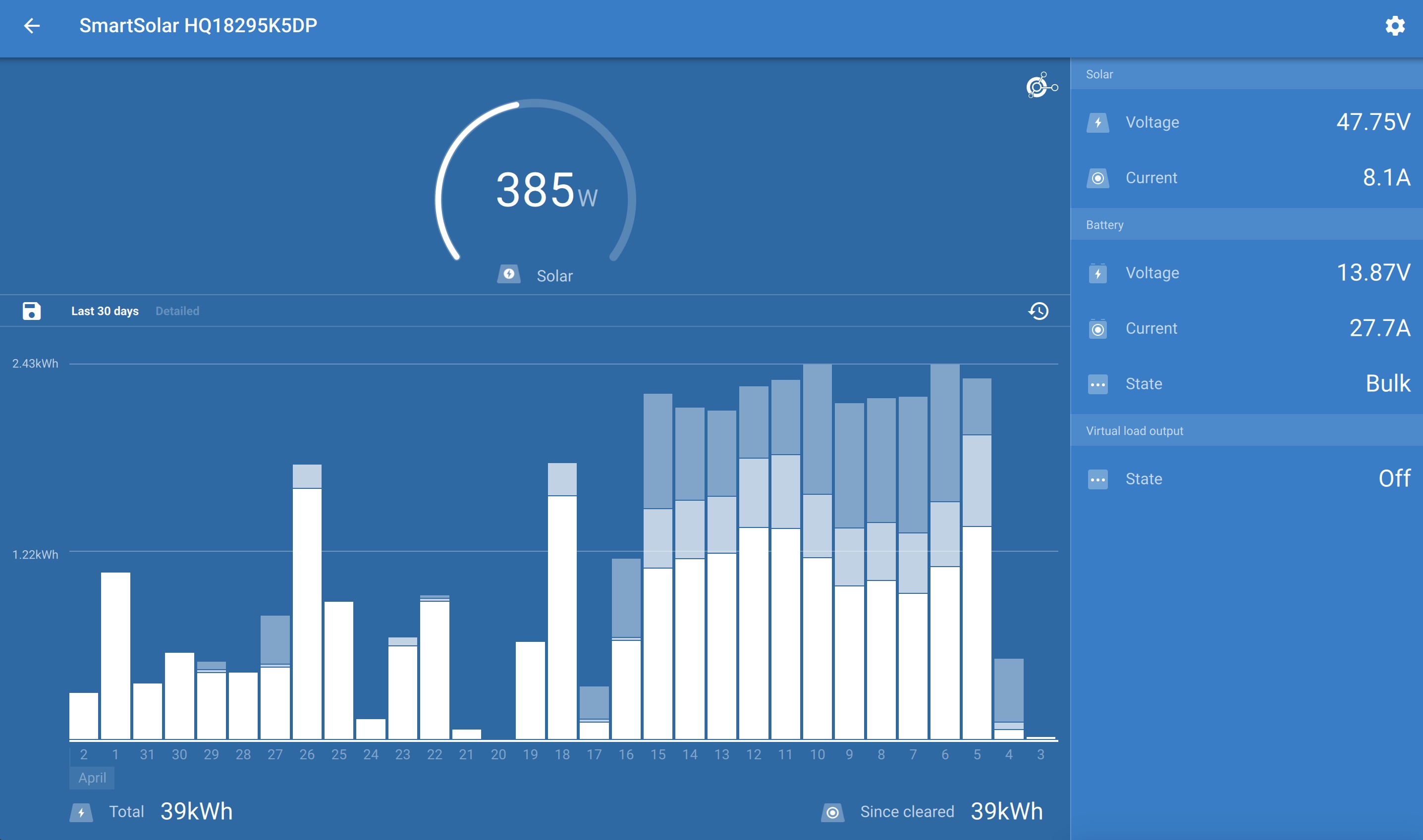
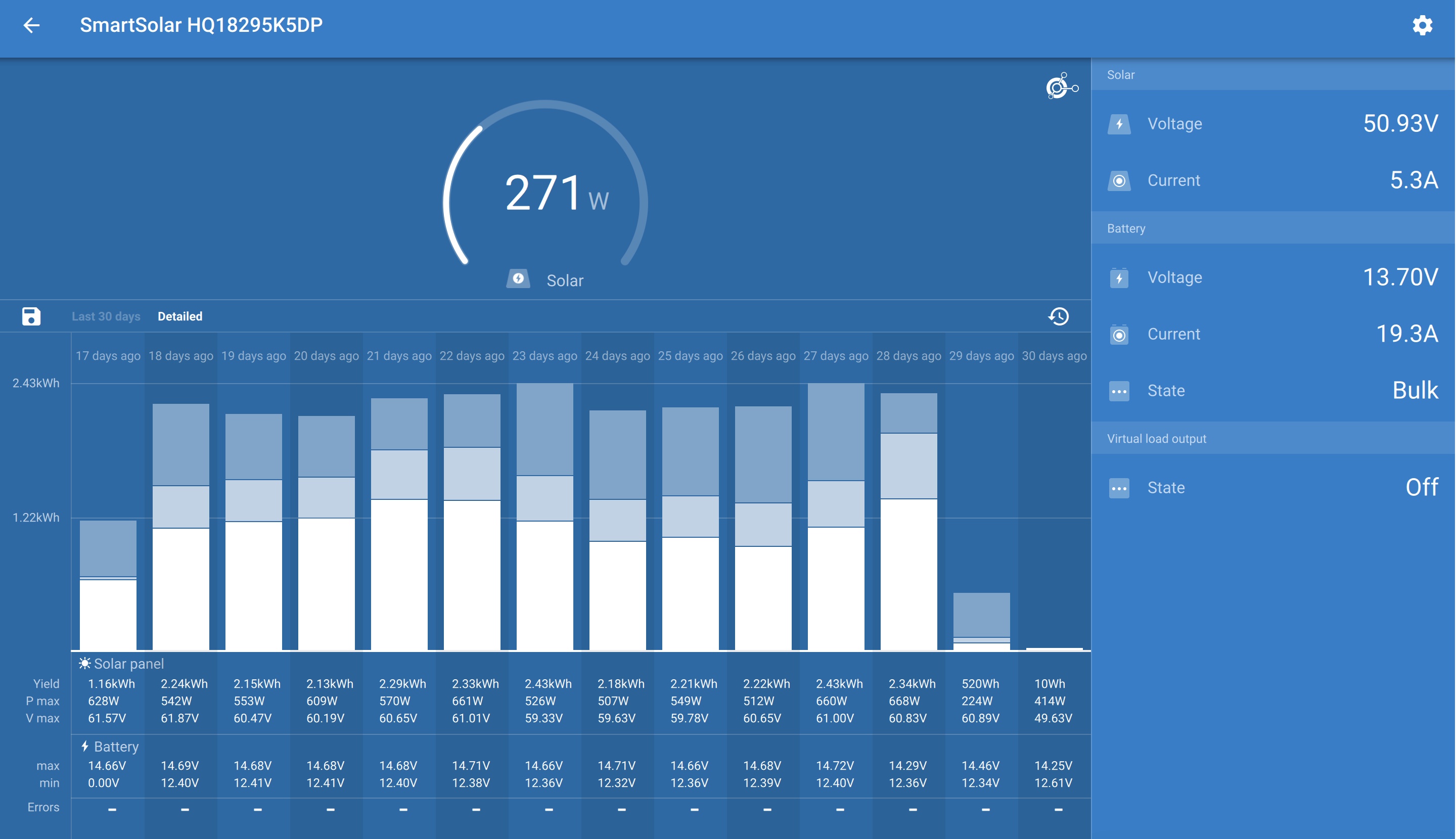
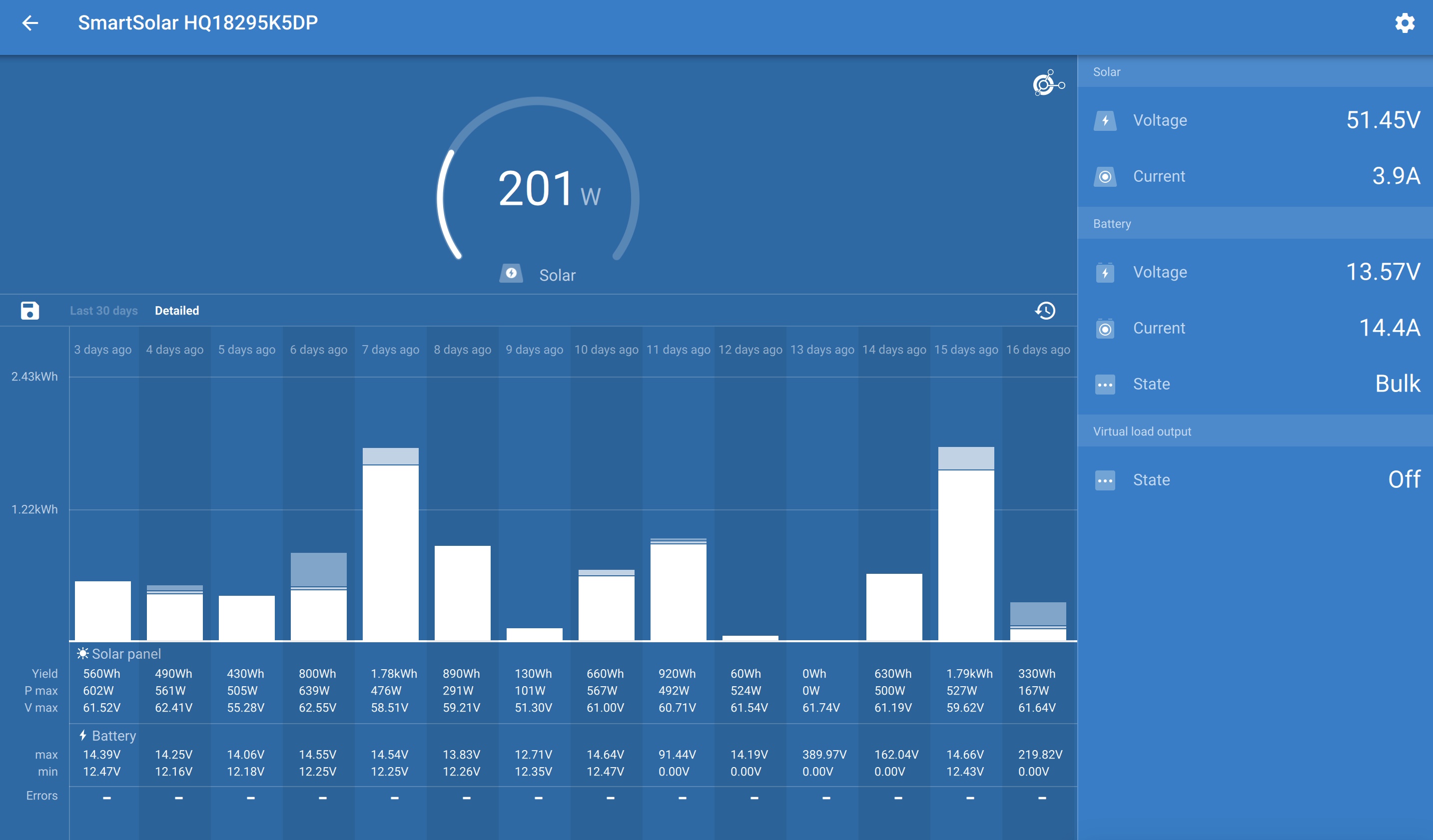
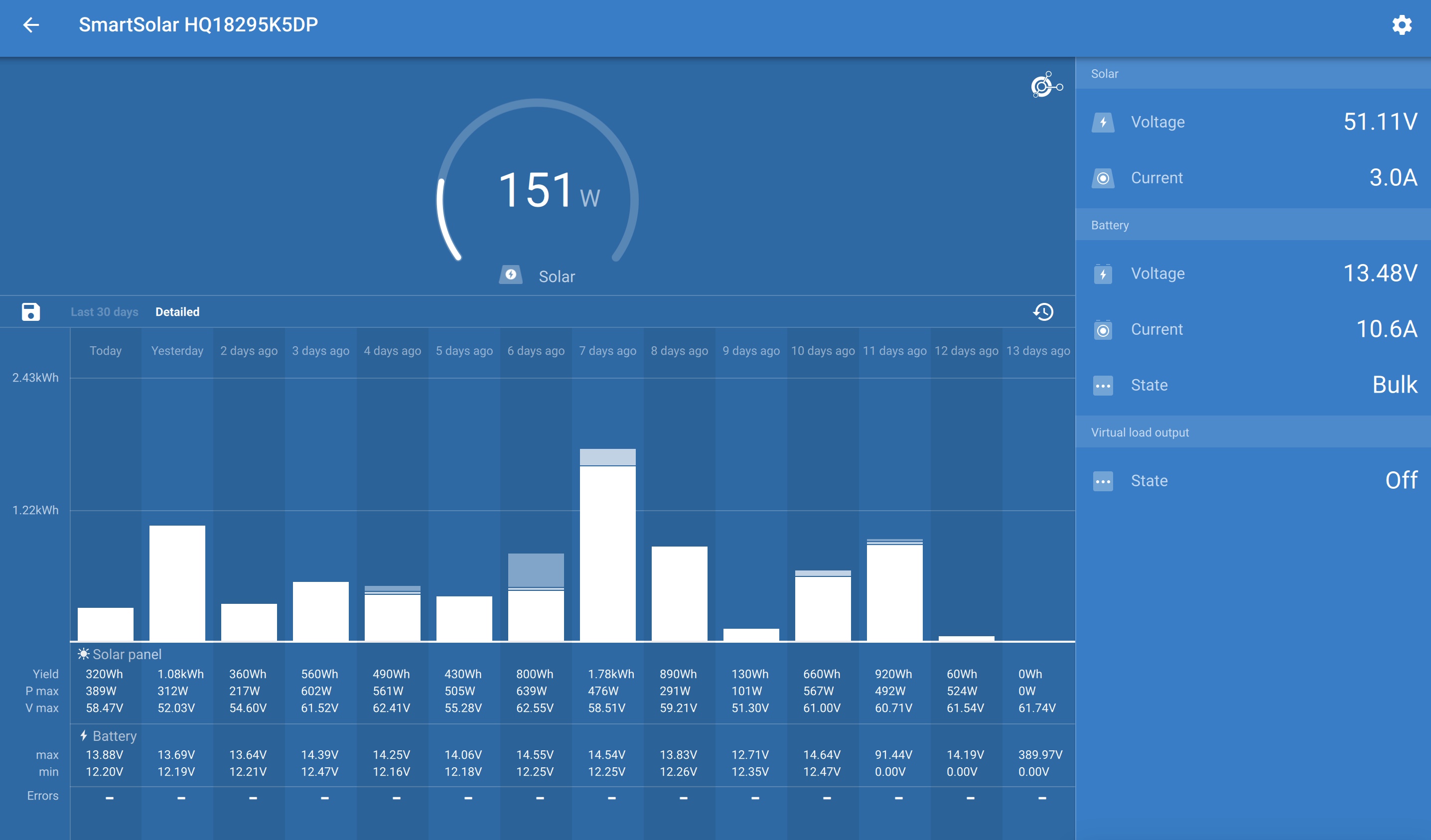
Hi all,
I've recently installed a solar setup on my sailboat. 2x327w Sunpower panels in parallel, BMV712 and the 100/50 SmartSolar MPPT.
I've attached screenshots of my app showing the output over the past couple of weeks. In the first photo, you can see that things are consistent from 5th to the 15th of March. My wife and I were living aboard on our mooring and did not start the engine but had full 100% batteries by midday (520Ah house bank).
After the 15th things seem to take a strange turn. I have a circuit breaker between the solar and the MPPT that's 20Amps as the panels have a rated output of just over 12amps. After the controller i have the largest gauge wire the MPPT will accept running a short distance of 400mm to the battery connection to minimize voltage drop etc. On the positive wire between the MPPT and the battery I have a 60Amp circuit breaker. I used to have a 50Amp, but found that was too small and was advised by a marine electrician to up it to 60Amp circuit breaker...so I did. From the 5th to the 15th, no issues. After that, the MPPT seems to get quite hot and the positive wire running from the MPPT to the battery also gets very warm and eventually the circuit breaker pops. This was never an issue in that first week. I live in the tropics in Australia, and here it's summer, so things are warmer for sure, but every day is basically the same of around 30c + humidity.
Does anyone have an idea what is going on? you can see from the other detailed screenshots that it just trips when in bulk mode and there is no absorption or float. The batteries are definitely not getting their full charge. It seems to happen the most in mid morning when the sun is getting really strong and the ambient temperature isn't too hot outside yet.
Is the heat possibly from the circuit breaker running at close to it's maximum? Again, it's a 60A on the battery side of a 50A MPPT. The wire seems to be hottest closest to that breaker so that to me makes the most sense, and then I assume when it gets too hot it trips itself? Should I upgrade to a 80A circuit breaker? Also, what happens to the 100/50 SmartSolar when it gets really warm/some would call hot? Will it just derate itself, or is this normal?
The Controller is located in an aft cabin with small hatches above it for ventilation and it's always open to the saloon and rest of the boat which is constantly ventilated and shaded with boom tents etc.
Any help would be really appreciated. Nothing worse than running a noisy diesel engine in a tranquil secluded island bay!
Thank you in advance!


